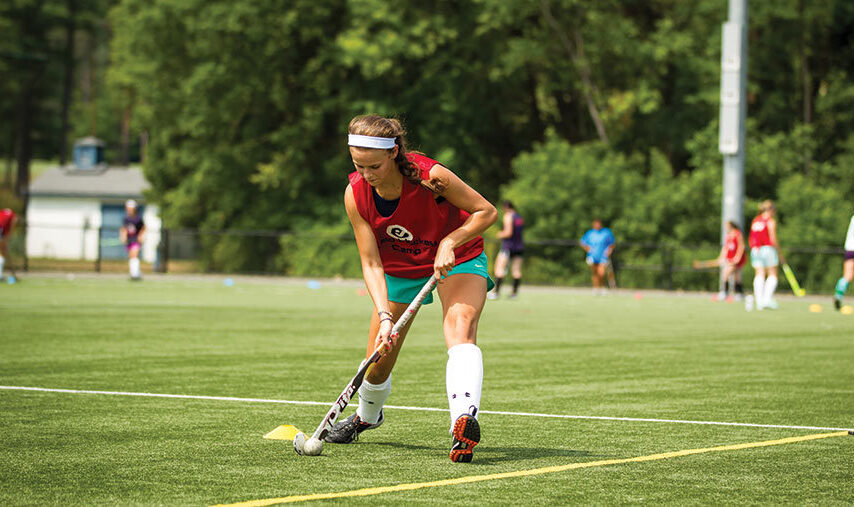Although major media platforms focus on soccer and football, hockey is also an interesting game many people love. Do you love watching hockey players glide with the ball using their sticks on ice or green field? Do you dream of someday becoming a pro and shining on that stage? If so, this article is for you.
It will highlight the top 10 skills you need to succeed as a pro on the modern hockey field. Developing these skills depends on your current level, strengths, weaknesses, position, etc.
Choose at least 1 or 2 skills at a time to perfect and improve on the rest of the skills. You may also need a professional coach or join an academy to enhance these skills. Remember, just like anything else, such as running, painting, soccer, Intertops casino bonus play, or whatever else you can think of, learning a new skill takes time. Have patience, and you will see results.
Skill 1: First touch
Your first touch is also called trapping. When you receive a ball from your teammate or intercept the ball from an opponent, can you head in the direction of free space? This first touch skill requires training to master.
Ideal trapping should allow you to look up to know what to do next. It should help to scan your next move when you receive the ball without being paralyzed.
Hard hands help you when receiving the ball into space in front of you, while soft hands allow the ball to pass across your body.
Moreover, your first touch should allow you to move the ball to the right or left to your teammate. A good first touch will create space between you and the opponent, thus enabling you to scan available spaces.
However, if your first touch is clumsy, the defender will likely take the ball from you and score. Fortunately, you can improve on this skill by practicing how to receive the ball from different spots and angles on the field.
Skill 2: Hit
This skill may seem simple when you watch hockey, but many players find it challenging to master. This is because several factors produce a powerful hit, including ball, foot, body, and head positioning. Other factors determining your hit are the swing, hip rotation, wrist action, and follow through.
You want to ensure your body weight and hip rotation are leaning forward while your head is directly on the ball. This positioning allows you to hit the ball with more power and accuracy.
Skill 3: Leading and positioning
For you to receive the ball well, you need to be in the right position. Leading will give you more time on the ball, thus enhancing your decision-making skills on the pitch.
You can make various types of leads depending on your position. For instance, your timing should be spot on to make a perfect lead. You should also understand the player with the ball and accurately anticipate that player’s next move.
However, if the ball does not come your way, you should re-lead and create space for your teammates.
Skill 4: Passing
Accurate passing leads to excellent plays and helps your team beat defenders and cover the field speedily. However, it depends on several skills, including trapping and positioning.
For instance, if you are a defender, you should give more attention to your overheads or fake slapping. A midfielder would want to practice lifted passes or right-foot passing, while a striker may be interested in mastering 2v1 or one-touch passing.
Skill 5: Flat stick tackle
A clean flat stick tackle is a skill that all hockey players should learn regardless of their position. However, a bad tackle can sometimes happen when you are caught in a bad position.
For instance, you can be caught flat-footed, commit too early, or be in a poor body position, leading to bad tackles. A bad tackle could lead to you being suspended from the game.
You can avoid a bad tackle by channeling a player into less dangerous areas before tackling. Keep your stick down as you force your opponent wide and close the route to the goal.
Skill 6: Jab or poke
Jab is probably the most unexplored or underused skill in hockey games. It applies to all players, regardless of their position. The purpose of jab tackle is to pile pressure on the player with the ball so that they can make passing mistakes.
With this tackle, you can force them to change direction or lure them into dummy spaces. This skill can also help you to lure your opponents to less dangerous areas, hindering their movements.
Sometimes you can jab next to the ball instead of jabbing the ball directly to close the spaces down, thus forcing the opponent to run in one direction.
Skill 7: Tomahawk or reverse
Reverse skills can be difficult to master for many players, but it is worth practicing, especially for those on the left-hand side. Defenders can use this skill when clearing balls down the line; midfielders can use it to pass the ball a cross, while strikers can use it to shoot the ball to the goal from several angles.
Skill 8: V drag
This skill is also called dummy skills, one of the most valuable elimination skills used by all positions. For instance:
- A defender can use it to get out of a difficult situation under pressure
- A midfielder can employ the V drag technique to create attacking opportunities for strikers
- With this skill, a striker can create space to fire a shot at a goal.
Players often move the ball in the V movement before jetting forward out of the defender’s reach.
Skill 9: 3D skills
If a striker masters 3D skills, they can become every defender’s nightmare. You could enhance this skill by using controlled lift against defenders who make flat stick tackles.
This skill scares defenders, making them indecisive on how to tackle you. You can then capitalize on that room to score.
Skill 10: Deception
Deception may not be a technical skill; however, it is an excellent technique if you want to excel in the abovementioned skills. It helps you pull an element of surprise, making it harder for your opponent to know your next move.
For example, you could threaten to do an elimination skill, only to dance in a different direction.
Final thought
Hockey is an interesting game, but you need to master the rules and relevant skills to go pro. These skills will help you enjoy the game; if you keep improving, you could play the major leagues.
Just remember, no matter how much fun you are having, keep it safe! Injuries in sports are a common occurrence, and we want to keep the injuries to a minimum and the playtime to a maximum. So, if you want to keep the hockey injuries down, then stay safe, and remember that it is just a game at the end of the day.
Also Visit: The Best Database Software: A Guide for Businesses and Individuals













